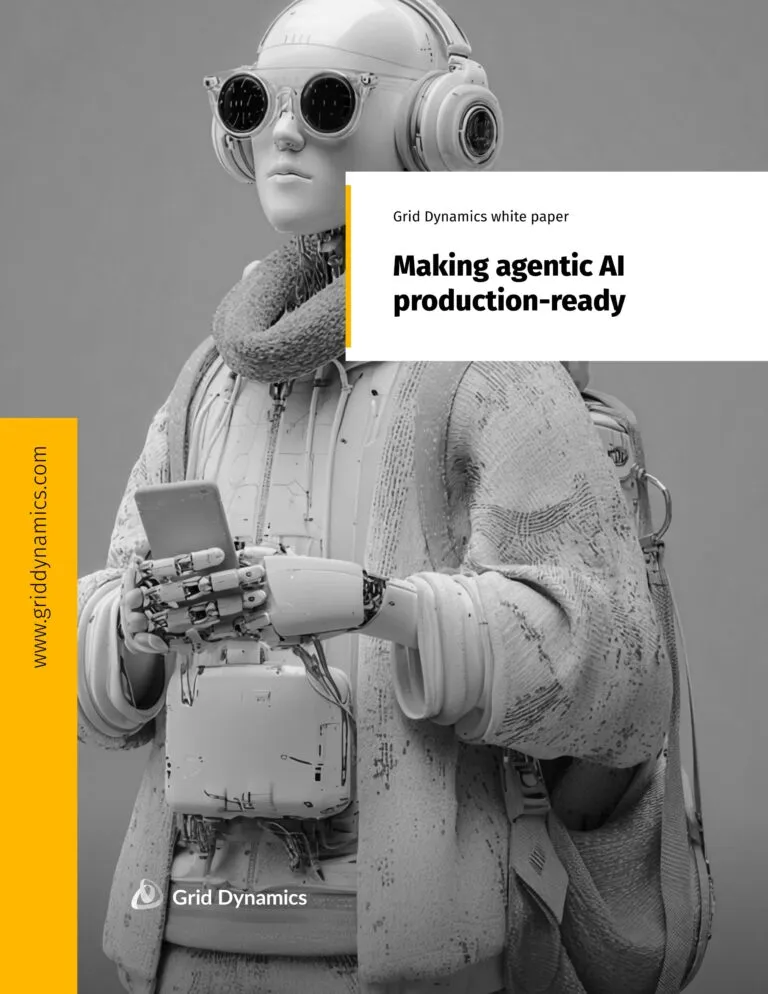How AI brings a new WAVE of transformation to SDLC automation
Aug 14, 2025 • 7 min read

Today, agentic AI can autonomously build, test, and deploy full-stack application components, unlocking new levels of speed and intelligence in SDLC automation. A recent study found that 60% of DevOps teams leveraging AI report productivity gains, 47% see cost savings, and 42% note improvements in quality. However, for many Fortune 1000 companies, these benefits remain limited to isolated pilots that serve individual teams. Scaling AI impact across a complex enterprise application landscape with heterogeneous flows of software development lifecycles (SDLC) remains a significant challenge.

The real question is no longer whether AI can enhance software delivery, but how enterprises can systematically evolve fragmented, brownfield SDLC environments through both technological and organizational change, while managing risk, maintaining quality, and building sustainable internal capabilities.
Enterprise software development landscapes are rarely uniform. They typically consist of multiple clusters, each shaped by distinct factors: the nature of the application, the platforms and tools used for delivery, the organizational models supporting them, and the regulatory environments in which they operate. Despite this heterogeneity at the macro level, SDLCs within any given cluster tend to exhibit a degree of internal consistency. This allows organizations to identify representative applications within a cluster, conduct deep-dive diagnostics, and uncover repeatable patterns that can inform broader transformation efforts of AI adoption. The WAVE framework is purpose-built for this challenge. It provides a structured methodology to drive targeted, cluster-specific SDLC automation, ensuring that interventions are both context-aware and scalable.
Introducing the WAVE framework for SDLC automation
Grid Dynamics’ WAVE framework provides a co-innovation methodology designed for enterprises undertaking this transformation toward agentic development. Drawing from over 10 years of AI expertise and deep experience in modernizing Fortune 1000 SDLC automation systems, WAVE helps businesses evolve organically through collaborative partnerships with our clients. We combine our AI engineering capabilities with client domain knowledge to support knowledge transfer and foster innovation autonomy.
Which key actions ignite the WAVE?
The WAVE framework is structured around four key action areas: identifying what to improve, automating smartly, validating with layered trust, and evolving with feedback.

These components together address three critical transformation challenges:
- Identifying high-impact use cases that align with organizational readiness.
- Implementing AI safely with proper context and governance while building internal capabilities.
- Scaling human-agent collaboration across diverse teams and technology stacks, avoiding capacity imbalance.
What to improve
Every transformation begins with structured, enterprise-level diagnostics that assess engineering productivity across delivery and operations. The WAVE framework assesses SDLC systems as value delivery mechanisms, identifying root causes within heterogeneous, brownfield environments while determining readiness for controlled AI integration.
The comprehensive assessment methodology examines delivery systems across four critical dimensions:
- Speed: Production delivery velocity and friction points where AI can reduce handoff delays.
- Quality: Change delivery, safety, and reliability, identifying where AI validation complements human expertise.
- Economics: Resource utilization efficiency and opportunities where AI augmentation can free capacity for higher-value work.
- Value: Business impact measurement through human-AI collaboration.
The assessment leverages multiple data sources to build a comprehensive understanding:
- Input analysis: Examine the organizational topology, product and systems portfolio, development and operations platforms, along with process documentation and SDLC governance artifacts to establish baseline context for transformation readiness.
- Flow and bottleneck identification: Analyze data across delivery platforms and code repositories to uncover cross-team value stream patterns, apply activity-based costing for accurate metrics, and map handoffs to identify tooling, process, and organizational friction points.
- Output distribution mapping: Produces a prioritized list of the top five productivity issues, supported by reference value stream maps that highlight delivery and operations bottlenecks. The analysis also surfaces workflow output distribution patterns and key metrics that inform productivity improvement hypotheses.
Rather than attempting wholesale transformation, the assessment pinpoints areas that deliver immediate, measurable value. This includes addressing key bottlenecks across the delivery flow, unlocking engineering capacity through toil budget automation using AI solutions, exploring system consolidation opportunities, and implementing measurement tools that support the research and justification of future initiatives.
Automate smartly
Introducing AI-powered SDLC automation workflows that boost human-agent productivity across development, testing, and operations—amplifying human capabilities, not replacing them—and driving sustainable productivity gains over quick but suboptimal fixes.
AI-enhanced development workflows
Modern enterprises require AI solutions that seamlessly integrate into the existing software development process to improve productivity across three core areas:
- Requirements intelligence: AI agents assist development teams and product owners by validating consistency across Jira tickets, documentation, and user stories, and automatically flag discrepancies and suggest clarifications. For legacy systems, AI tools help teams reverse-engineer requirements from existing codebases to capture actual business logic. AI agents also process refinement session recordings to suggest documentation updates, ensuring that stakeholder decisions and clarifications are captured in formal specifications.
- Automated code generation and enhancement: To generate production-ready code components, AI agents analyze requirements, existing codebases, and architectural patterns, ensuring that business context is understood, coding standards are maintained, and that team autonomy over technical decisions is preserved.
- Intelligent testing automation: Beyond traditional automated testing, AI-driven testing creates comprehensive test scenarios by mining requirements documentation, user stories, and operational patterns. This includes automated test script generation for multiple frameworks, intelligent test optimization that eliminates redundancy, and autonomous exploratory testing processes that discover edge cases.
- Operations intelligence: AI-powered monitoring and incident response systems automatically correlate logs, identify the root cause, predict potential failures, and generate actionable remediation recommendations based on historical patterns.
Human-agent productivity model
The most successful AI implementations establish collaborative workflows where human expertise guides AI capabilities toward business objectives. AI handles routine cognitive tasks, data analysis, and pattern recognition, and humans focus on strategic decisions, creative and AI-collaborative problem-solving, and complex business logic.
Measuring human-agent productivity
Success metrics focus on amplifying human capabilities while maintaining system reliability, with industry data highlighting both opportunities and implementation challenges:
| Human-agent collaboration gains | Quality through AI-enhanced workflows | Balancing velocity with stability |
| Google’s enterprise research shows a 21% reduction in time-to-task for developers using AI tools, based on a randomized controlled trial involving 96 full-time software engineers. The 2024 DORA report further validates this model, noting a 2.1% productivity increase for every 25% rise in AI adoption, supporting the scalable benefits of human-agent collaboration. | Teams using AI for code reviews report quality improvements in 81% of cases, compared to 55% for teams without AI assistance. AI-enhanced QA teams have also reduced testing costs by 25–30% through test-case optimization and script self-healing, reinforcing the WAVE framework’s focus on validation and quality assurance. | The 2024 DORA report reveals a cautionary note. AI adoption without proper guardrails can lead to a 7.2% drop in delivery stability and a 1.5% decrease in throughput. However, elite DORA performers with strong quality practices show that sustainable delivery is achievable when AI is deployed with discipline and oversight. |
Evidence shows the WAVE approach drives strong gains through gradual, validated AI adoption. Sustained success depends on careful execution, constant measurement, and human oversight.
Validate with layered trust
Businesses must establish comprehensive governance and validation frameworks that ensure AI-enhanced workflows operate within enterprise policies, security requirements, and quality standards as the leadership builds organizational trust through gradual modernization.
Multi-layered validation framework
Successful AI validation requires multiple safeguard layers, including appropriateness guardrails for bias and harmful content, hallucination guardrails for factual accuracy, regulatory compliance validation, and alignment guardrails to verify that outputs meet business expectations.
- Technical validation layer: Automated security scanning, architectural consistency checks, and performance benchmarking ensure AI-generated code meets enterprise standards through integrated mechanisms spanning policy creation to real-time monitoring.
- Business process integration: AI validation systems integrate with existing quality assurance workflows, code review processes, and application deployment pipelines. Human reviewers focus on high-impact decisions while automated systems handle routine validation.
- Governance and compliance: External guardrails act as intermediaries between users and AI models, ensuring safety and compliance, including data privacy protection, regulatory alignment, and industry-specific requirements.
Effective AI validation balances automation with human oversight, enabling teams to move faster by maintaining software quality and compliance standards through gradual adoption, comprehensive measurement, and demonstrated value.
Evolve with continuous feedback
Transforming AI adoption from a tactical implementation into a strategic competitive advantage demands building organizational capability to continuously learn, adapt, and advance AI-enhanced development practices, all while maintaining ownership of your strategic direction and innovation agenda.
Build internal AI capabilities
Successful evolution requires organizations to develop self-sustaining AI capabilities that reduce dependency on external providers and accelerate innovation:
- Technical capability development: Teams build expertise in prompt engineering for development workflows, AI model evaluation and selection, automated validation system configuration, and human-AI collaboration patterns.
- Organizational learning systems: Establish continuous learning mechanisms that enable teams to adapt AI workflows based on real-world feedback. This includes knowledge-sharing practices across teams, iterative refinement of human-AI collaboration patterns, and cultural adaptation processes that embrace experimentation and learning from both successes and failures.
- Strategic innovation capability: Go beyond operational efficiency by leveraging AI for competitive differentiation, whether through accelerated time-to-market, higher quality products, or innovative customer experiences.
Comprehensive measurement framework
Successful AI evolution turns organizations from passive adopters into AI-native enterprises that harness human-AI collaboration for competitive advantage. This shift enables teams to drive measurable, sustained improvements in delivery velocity, software quality, and business outcomes using key metrics.
| Development velocity metrics | Quality and risk metrics | Business impact metrics |
| Track improvements in feature delivery speed, code quality maintenance, and technical debt reduction while monitoring developer satisfaction and focusing on higher-value work throughout the development cycle. | Measure defect reduction rates, security vulnerability prevention, compliance adherence, and incident response effectiveness. | Connect AI-improved development capabilities to business outcomes such as customer satisfaction improvements, market responsiveness, competitive positioning, and revenue impact. |
Manage AI implementation risks
Any digital transformation presents both opportunities and risks. The WAVE framework explicitly addresses four critical risks arising from AI adoption:
- Technical risks: AI-generated code can introduce architectural inconsistencies, security vulnerabilities, or performance bottlenecks. Our co-innovation approach includes collaborative establishment of guardrails and performance benchmarking.
- Contextual risks: Agentic systems require rich, structured context to make intelligent decisions. Without proper infrastructure modeling, agents may produce technically correct but contextually inappropriate solutions.
- Organizational risks: The shift to collaborative human-agent workflows requires new skills, roles, and cultural adaptation. Our co-innovation model addresses these through embedded training and gradual capability transfer.
- Risks associated with capability dependency: WAVE’s co-innovation methodology mitigates these risks by ensuring knowledge transfer and building internal capabilities for independent evolution.
Why WAVE, why now?
The shift to agentic SDLC automation unlocks productivity gains unlike anything we’ve seen before. But more importantly, it sparks a complete rethink of how enterprise engineering teams work, evolve, and build. It requires new approaches to software development, decision-making, and cross-team collaboration.
Grid Dynamics’ WAVE framework, delivered through our proven co-innovation model and backed by over 10 years of AI engineering experience, provides the collaborative approach enterprises need to successfully navigate this transformation while maintaining ownership and control of their evolving capabilities, so transformation happens with you, not to you. Unlike traditional consulting models that create dependency, our approach ensures client organizations emerge stronger, more capable, and fully equipped to drive continued innovation in agentic development practices.
Ready to explore how our AI-powered SDLC transformation can enhance your software delivery? Contact us to schedule an assessment and discover how the WAVE framework can accelerate your journey to AI-native engineering.
Tags
You might also like

Today, many organizations find themselves grappling with the developer productivity paradox. Research shows that software developers lose more than a full day of productive work every week to systemic inefficiencies, potentially costing organizations with 500 developers an estimated $6.9 million an...
Fortune 1000 enterprises are at a critical inflection point. Competitors adopting AI software development are accelerating time-to-market, reducing costs, and delivering innovation at unprecedented speed. The question isn’t if you should adopt AI-powered development, it’s how quickly and effectivel...
According to Gartner, by 2028, 33% of enterprise software applications will include agentic AI. But agentic AI won’t just be embedded in software; it will also help build it. AI agents are rapidly evolving from passive copilots to autonomous builders, prompting organizations to rethink how they dev...
When it comes to the best web development frameworks, finding the right balance between efficiency, creativity, and maintainability is key to building modern, responsive designs. Developers constantly seek tools and approaches that simplify workflows while empowering them to create visually strikin...
Most enterprise leaders dip their toe into AI, only to realize their data isn’t ready—whether that means insufficient data, legacy data formats, lack of data accessibility, or poorly performing data infrastructure. In fact, Gartner predicts that through 2026, organizations will abandon 60% of AI pr...

For many businesses, moving away from familiar but inherently unadaptable legacy suites is challenging. However, eliminating this technical debt one step at a time can bolster your confidence. The best starting point is transitioning from a monolithic CMS to a headless CMS. This shift to a modern c...
Many organizations have already embraced practices like Agile and DevOps to enhance collaboration and responsiveness in meeting customer needs. While these advancements mark significant milestones, the journey doesn't end here. Microservices offer another powerful way to accelerate business capabil...









